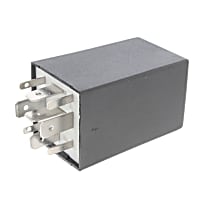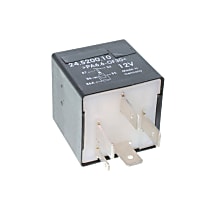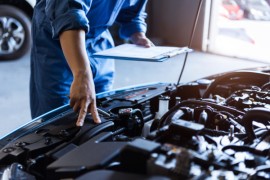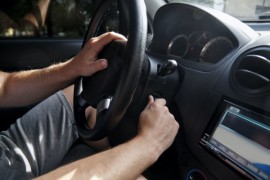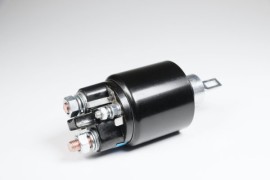{
"lazyNodes": false,
"abFitnotesFlag": false,
"abCrawlReviews": false,
"productOptionsCookie": false,
"orderDelayFlag": false,
"skipSessionCookie": false,
"covidMessage": false,
"fullTitleCookie": false,
"nrLoggerCookie": false,
"checkoutReviewCookie": false,
"productOptionSeqCookie": false,
"maintenanceFlag": false,
"bufferETACookie": false,
"multiShippingDiscountFlag": false,
"newFitmentFlag": false,
"surveyOptInFlag": false,
"crossSellFlag": false,
"skuMappingFlag": false,
"paySplitCookie": false,
"callDisableFlag": false,
"zipPaymentFlag": "u",
"hassleFreeReturn": false,
"lifetimeReplacement": false,
"cpn_off": false
}Need Help? Call Us1-866-529-0412
1999 Volkswagen EuroVan
1999 Volkswagen EuroVan Starter Relays
Refine by:
Shop Catalog
Showing 1 - 2 of 2 results
Sort by:
Part Number: Z8YV15711020
Guaranteed to Fit
$16.49
Vehicle Fitment
- 1999 Volkswagen EuroVan GLS 6 Cyl 2.8L
- 1999 Volkswagen EuroVan MV 6 Cyl 2.8L
Product Details
Warranty : 24-month or 24,000-mile Vemo limited warrantyQuantity Sold : Sold individuallyProp 65 Warning :
![]() WARNING: This product can expose you to chemical which is known to the State of California to cause cancer and birth defects or other reproductive harm. For more information go to www.P65Warnings.ca.gov.
WARNING: This product can expose you to chemical which is known to the State of California to cause cancer and birth defects or other reproductive harm. For more information go to www.P65Warnings.ca.gov.
Part Number: Z8YV15710017
Guaranteed to Fit
$10.49
Vehicle Fitment
- 1999 Volkswagen EuroVan MV 6 Cyl 2.8L Voltage: 12 V; 30 Amp
- 1999 Volkswagen EuroVan GLS 6 Cyl 2.8L Voltage: 12 V; 30 Amp
Product Details
Notes : (5) Pole Quantity; 30 A Rated CurrentWarranty : 24-month or 24,000-mile Vemo limited warrantyQuantity Sold : Sold individuallyProp 65 Warning :
![]() WARNING: This product can expose you to chemical which is known to the State of California to cause cancer and birth defects or other reproductive harm. For more information go to www.P65Warnings.ca.gov.
WARNING: This product can expose you to chemical which is known to the State of California to cause cancer and birth defects or other reproductive harm. For more information go to www.P65Warnings.ca.gov.
Page 1 of 1 | Showing 1 - 2 of 2 results
Popular Products

VemoStarter Relay - Replaces OE Number 3A0 927 181Manufacturer #V15-71-1020
( Reviews) Questions, Answers
VEMO STARTER RELAY
The Vemo Starter Relay uses the finest quality materials available in the automotive industry. It delivers long-lasting service and OE standard design for appropriate fitment and function to meet the demands of your vehicle.
- Guar...
Product Questions & Answers
Q:How to substitute an out of stock part?
Ethan T.
A:BEST ANSWERHi Ethan, I'm pleased to assist you. We can cross-reference or find alternative brands. I suggest calling our parts specialists at 1-866-529-0412 to provide the vehicle information so we can help you look for the right part. Have a nice day. Show less
Grace G.
1 Question, 1 AnswerView all Q&As >
Helpful Automotive Resources
P0615 Code: Starter Relay CircuitA problem with the starter relay can alert the PCM that the entire circuit is not functioning as it should. This will cause the PCM to log a P0615 code.
Car Won’t Start & There’s a Clicking Noise?Electricity then flows from the battery, through the starter relay, and to the starter solenoid.
Diagnosing Ignition Troubles: Car Won’t Start but the Radio Works FineThe battery can also fail prematurely. Overcharging can cause the battery’s internal components like the active plate material to disintegrate and fall out of the supporting grid framework.
Most batteries can last anywhere between three and seven years. Once it begins to wear out, it might still be able to get
Bad Starter Solenoid SymptomsAfter many years of use, some starter solenoids can wear out. If so, they must be replaced in order for your vehicle to start properly.
Contactor Part Issues
The Starting SystemBecause batteries emit hydrogen gas while charging, the battery case cannot be completely sealed. Years ago there was a vent cap for each cell and we had to replenish the cells when the electrolyte evaporated. Today’s batteries (maintenance free) have small vents on the side of the battery; the gases
